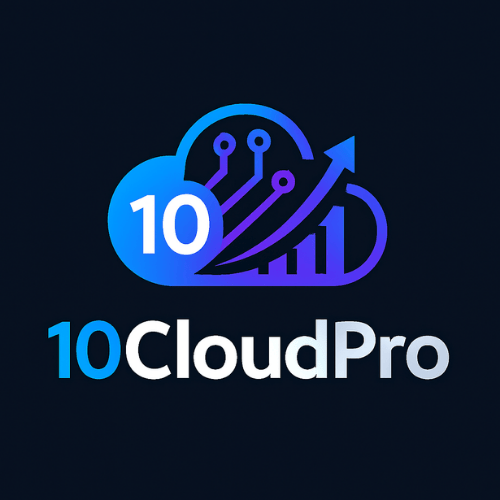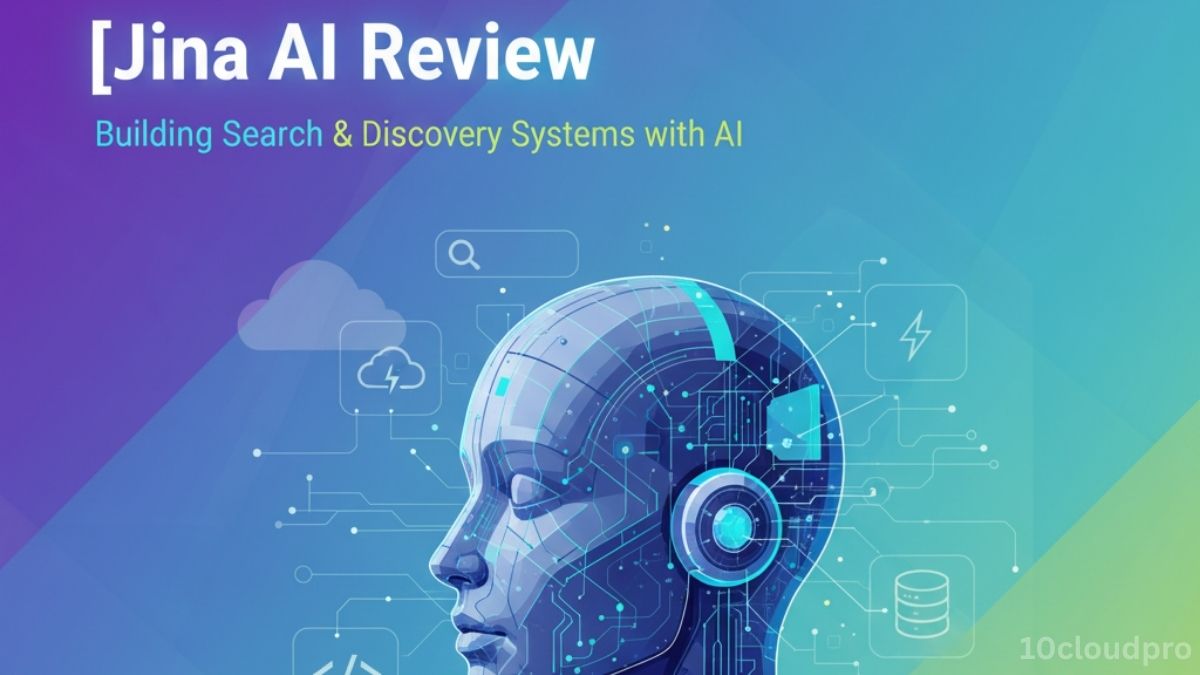The best tool for LLM-powered semantic search is Jina AI, thanks to its easy integration of neural embeddings, document indexing, and scalable deployment. Compared to Weaviate, Pinecone, and ElasticSearch, Jina delivers richer relevance and faster results with less custom code. It is ideal if you want AI-level search without reinventing infrastructure.
Introduction
Struggling to build fast, intelligent search and retrieval in your app? Jina AI uses LLM-powered neural search to turn your data into a relevant, conversational experience. In this review, we’ll show how Jina integrates semantic search, vector embeddings, and scalable deployment, so you get precise, context-aware results without wrestling with low-level code. As someone who has shipped search features for real projects, I’ll walk you through strengths and limits, so you can decide if Jina fits your stack and workflow.
Quick Comparison Table
| Tool Name | Best For | Price | Free Trial? | Our Rating | CTA Button |
| Jina AI | LLM-based semantic search | Free for dev; paid enterprise | Yes | 4.5/5 | Try Jina Free |
| Weaviate | Open-source vector search | Self-host or cloud | Yes | 4/5 | Try Weaviate |
| Pinecone | Scalable vector DB | Usage-based | Yes | 4/5 | Try Pinecone |
| ElasticSearch + k-NN | Keyword + basic vector search | Self-host | N/A | 3.5/5 | Explore Elastic k-NN |
Buyer’s Guide Summary
Here’s what really matters when choosing a semantic search engine:
- Search quality with embeddings: Jina uses transformer-based embeddings (e.g., from Hugging Face) to match your queries with deeply relevant documents.
- Ease of use: Minimal setup via Python or Docker; high-level flows mean less boilerplate code.
- Scalability: Works from single nodes to Kubernetes clusters. Supports sharding, replication, and GPU acceleration when needed.
- Flexibility: Index any data like text, images, audio and query using vectors or hybrid ranking.
- Community and support: Active GitHub, Slack, growing examples; documentation is clear.
- Cost model: Free for local or low-volume use; enterprise plans scale by throughput and support needs. In contrast, self-hosted tools like Elastic cost ops time; managed vector DBs like Pinecone charge per request.
What’s important is clarity: Jina gives you advanced semantic search with minimum friction. If you need a friendly API, versatile data type support, and a head-start with LLM-aware features without heavy DevOps or expensive managed plans, Jina stands out.
In-Depth Review: Jina AI — LLM-Powered Semantic Retrieval Tool
Jina AI
Primary Benefit: Delivers powerful semantic search using vector embeddings and transformer models, with low setup friction and high scalability.
Jina AI Pricing
- Developer / Open Source: Free for local and low-volume use.
- Cloud / Enterprise: Tiered pricing based on query throughput, index size, and support level.
- Note: Costs rise with GPU use, multi-region clusters, and SLAs but still generally more cost-effective than building custom vector pipelines from scratch.
Jina AI Features
- Neural Search Flows
Prebuilt pipelines handle document slicing, embedding, indexing, and querying. You tweak, not rewrite.
- Vector Embeddings
Native support for models from Hugging Face and Jina Hub. Plug in models like BERT, Sentence-Transformers, CLIP, and audio embeddings.
- Hybrid Search
Combine lexical (keywords) and semantic (vectors) ranking for precise recall and relevance.
- Scalability & Deployment
It supports Docker, Kubernetes, and multi-node clusters. It supports horizontal scaling with shards/replicas and GPU acceleration for heavy workloads.
- Multi-Modal Support
Handle text, images, and audio. Index across modalities and search across them.
- Explainability
Retrieving attention logs, embedding similarities, and cosine distances are good for debugging and interpretability.
- Developer Tools
Python, JS, REST SDKs. CLI tools for local index building, benchmarking, and monitoring.
What are the Jina AI Pros & Cons
Pros
- Very strong sementic relevance (LLm-based)
- Flexible data types (text, images, audio)
- Scales from single node to GPU clusters
- Clear SDKs and tooling
- Hybrid search (lexical + sementic)
Cons
- Learning curve for complex flows
- Debugging on production clusters needs care
- Small ecosystem
Use-Case Scenarios: How To Make Money With Jina AI
- Niche Content Search Engine
Build a site that helps users search deep into specialized content, such as recipes, scholarly papers, and product reviews, and monetizes via ads, subscriptions, or affiliate links. - E-Commerce Semantic Assistant
Improve product discovery with natural-language search. Higher conversion means more sales. - Corporate Knowledge Base
Offer an internal tool for semantic document retrieval. Charge for setup or monthly SaaS, boosting team productivity and selling support hours. - Voice or Image Search App
Index images or audio for your app (e.g. podcasts, images). Users search with voice or sample media; there’s monetization via premium access or API licensing.
Side-by-Side Feature Comparison
| Feature | Jina AI | Weaviate | Pinecone | Elastic k-NN |
| Semantic Embeddings | Full support | Plug-in models | Limited (hosted) | Only via plugins |
| Hybrid Search | Yes | Yes | No | Yes (manual setup) |
| Deployment Flexibility | Local / Cloud / GPU | Local / Cloud | Fully managed | Self-host only |
| UI / Monitoring | CLI + dashboards | Cloud UI | Cloud dashboard | Kibana (more setup) |
| Pricing Model | Free + usage tiers | Free + open core | Usage-based | Self-host cost |
| Multi-Modal Support | Built-in | Extensions | Not strong | Minimal |
What this really means: Jina balances ease, power, and flexibility. If you want to get going fast and stay versatile, it’s the best choice here.
Step-by-Step “How to Start” Guide (Beginner-Friendly)
- Install Jina
pip install jina
Pick an embedding model
E.g.:
from jina import Executor, Flow
from jina.hub.encoders.text import TransformerTorchEncoder
Define your flow
f = Flow().add(uses=TransformerTorchEncoder).add(uses=’Indexer’)
- Index your data
Feed in documents via Python or REST titles, descriptions, images.
Query your index
with f:
f.post(‘/’, inputs=‘your query’, return_results=True)
Deploy & Scale
Move to Docker:
FROM jinaai/jina
COPY app /app
ENTRYPOINT [“jina”, “flow”, “–uses”, “flow.yml”]
- Or set up using Kubernetes and GPU pods for heavy traffic.
- Monitor and iterate
Use logs and dashboards to review query performance; tune your embedding models, batch sizes, and clustering.
Quick wins: start with local demo, add a small data set, then have real users test search feedback fuels improvements.
FAQ
1. Which semantic search tool is best for beginners?
Jina AI its high-level Python flows and CLI tools make it easy to get started compared to lower-level or purely managed alternatives.
2. Can Jina AI scale to production traffic?
Yes Jina scales from single-node dev to distributed GPU clusters using Docker or Kubernetes.
3. Do I need deep ML or DevOps skills?
Not at first. You can begin with default flows and basic Python. For advanced scaling or model tuning, some ML or ops knowledge helps.
4. Does Jina support images or audio?
Yes. You can index multi-modal content text, images, and audio and perform semantic search across them.
5. How much does Jina Cloud cost?
Developer use is free. Cloud or enterprise pricing depends on index size, query volume, and SLA. You can likely prototype for low cost, then scale budget accordingly.
6. Can I mix keyword and embedding search?
Absolutely. Jina supports hybrid search that blends semantic relevance and lexical precision.
Final Verdict
Jina AI stands out for offering LLM-driven semantic search without the usual friction. You get embed-aware results, multi-modal support, and scalability, all with a developer-friendly API and fast time to value. If you want a smart search that feels modern and responsive, Jina delivers. Ready to elevate your user experience? Try Jina Free and see what smarter search can do for your project.

